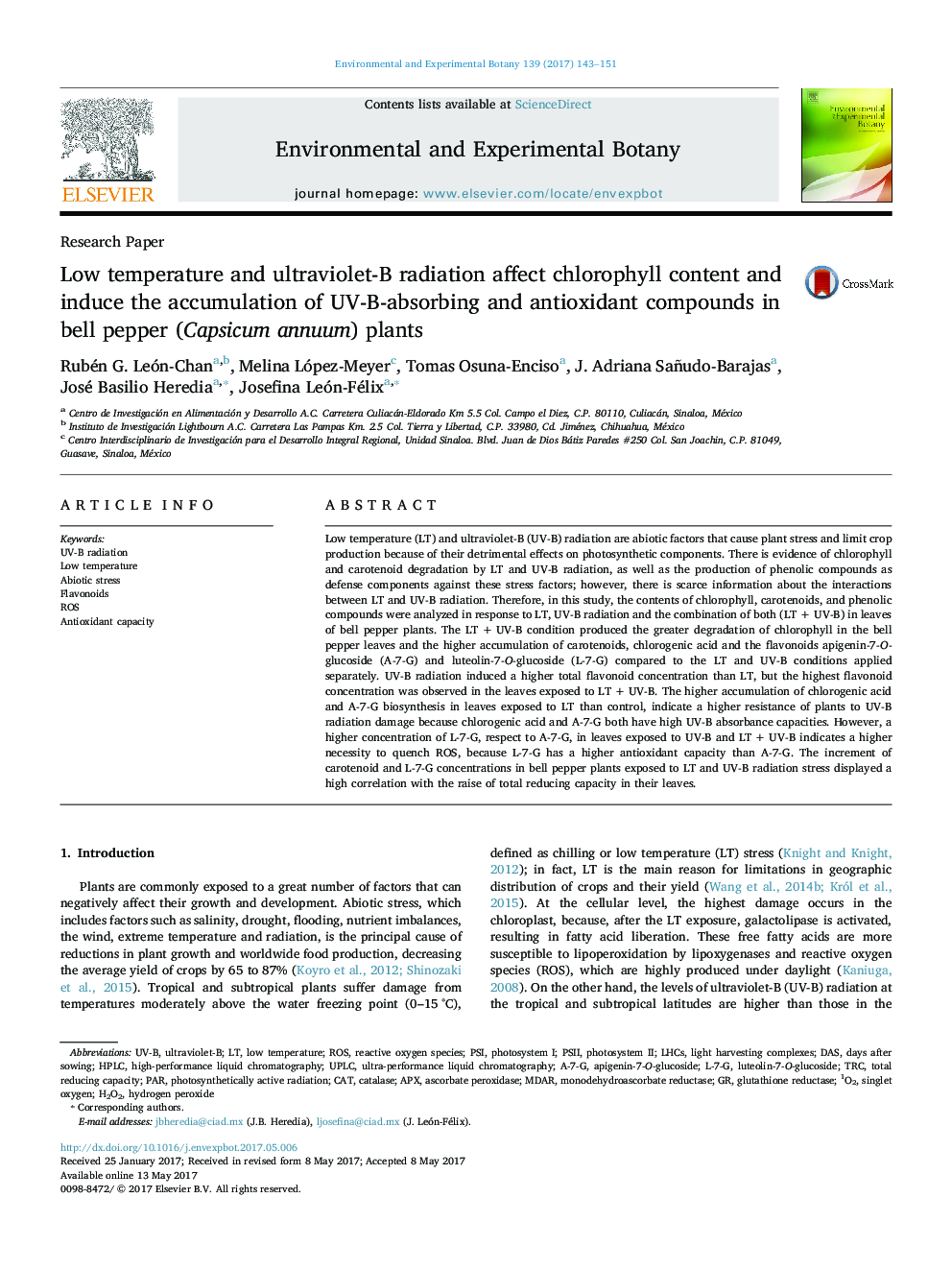| کد مقاله | کد نشریه | سال انتشار | مقاله انگلیسی | نسخه تمام متن |
|---|---|---|---|---|
| 5766731 | 1628038 | 2017 | 9 صفحه PDF | دانلود رایگان |

- UV-B induces higher flavonoid synthesis than low temperature (LT) conditions.
- LTÂ +Â UV-B induce higher accumulation of phenolic compounds than each stress alone.
- Specific flavonoid concentration is determined by the effect of LT and UV-B stress.
- UV-B mainly induces synthesis of flavonoids with greater capacity to quench ROS.
- UV-B radiation is more dangerous to plants exposed to LT than to control conditions.
Low temperature (LT) and ultraviolet-B (UV-B) radiation are abiotic factors that cause plant stress and limit crop production because of their detrimental effects on photosynthetic components. There is evidence of chlorophyll and carotenoid degradation by LT and UV-B radiation, as well as the production of phenolic compounds as defense components against these stress factors; however, there is scarce information about the interactions between LT and UV-B radiation. Therefore, in this study, the contents of chlorophyll, carotenoids, and phenolic compounds were analyzed in response to LT, UV-B radiation and the combination of both (LTÂ +Â UV-B) in leaves of bell pepper plants. The LTÂ +Â UV-B condition produced the greater degradation of chlorophyll in the bell pepper leaves and the higher accumulation of carotenoids, chlorogenic acid and the flavonoids apigenin-7-O-glucoside (A-7-G) and luteolin-7-O-glucoside (L-7-G) compared to the LT and UV-B conditions applied separately. UV-B radiation induced a higher total flavonoid concentration than LT, but the highest flavonoid concentration was observed in the leaves exposed to LTÂ +Â UV-B. The higher accumulation of chlorogenic acid and A-7-G biosynthesis in leaves exposed to LT than control, indicate a higher resistance of plants to UV-B radiation damage because chlorogenic acid and A-7-G both have high UV-B absorbance capacities. However, a higher concentration of L-7-G, respect to A-7-G, in leaves exposed to UV-B and LTÂ +Â UV-B indicates a higher necessity to quench ROS, because L-7-G has a higher antioxidant capacity than A-7-G. The increment of carotenoid and L-7-G concentrations in bell pepper plants exposed to LT and UV-B radiation stress displayed a high correlation with the raise of total reducing capacity in their leaves.
Journal: Environmental and Experimental Botany - Volume 139, July 2017, Pages 143-151